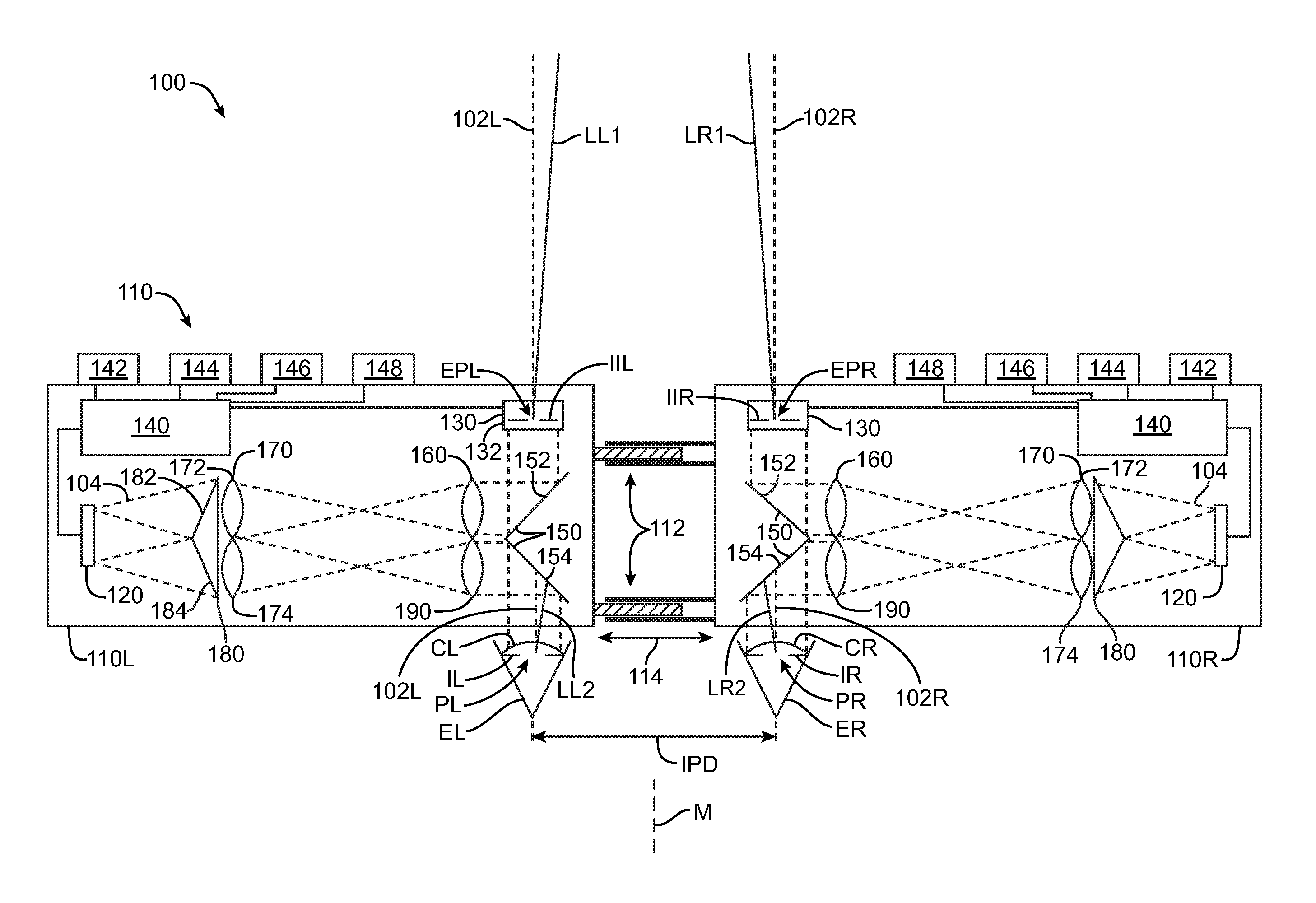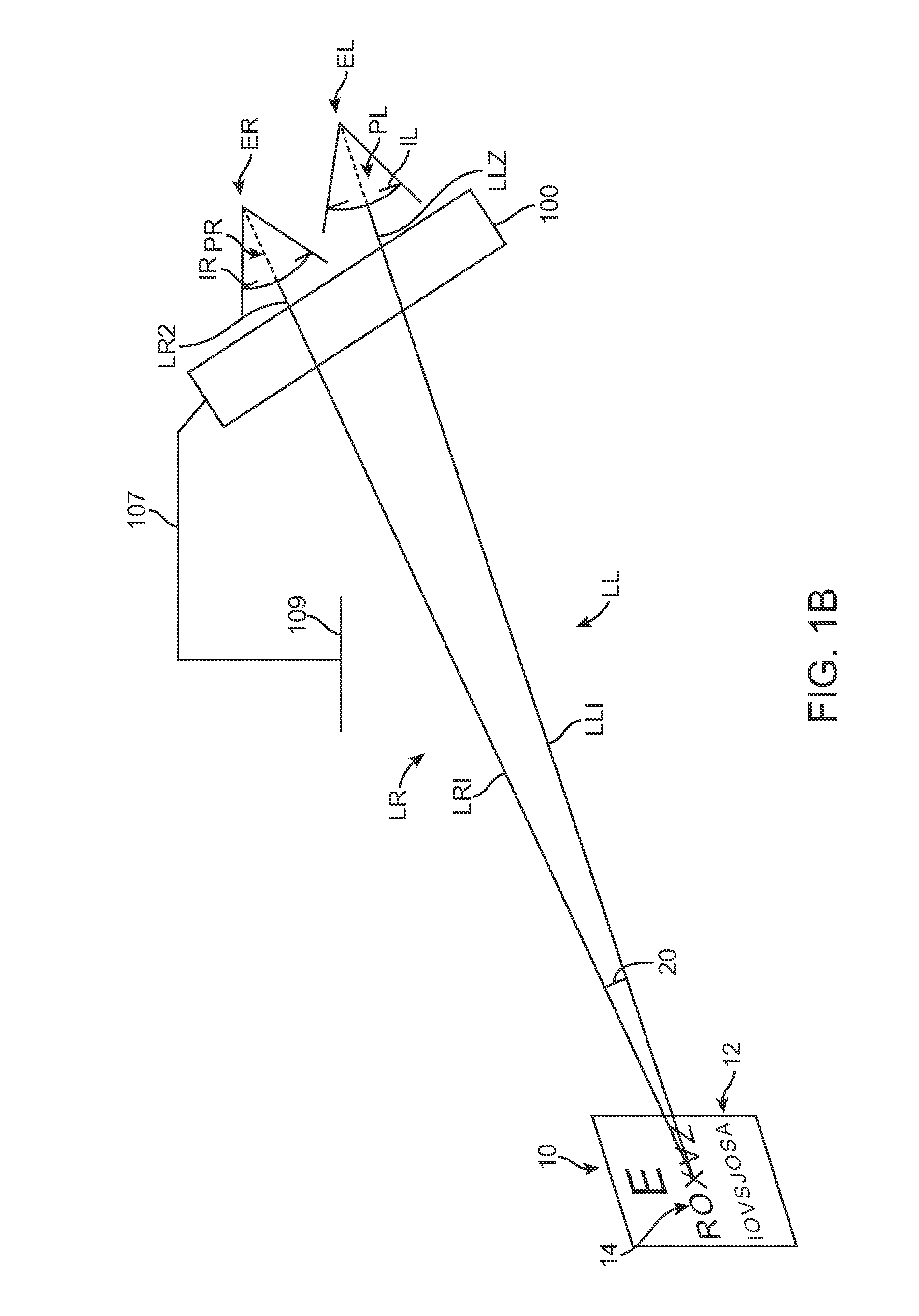Compact binocular adaptive optics phoropter
a binocular adaptive optics and phoropter technology, applied in the field of binocular vision and eye treatment, can solve the problems of patients with less than ideal vision, uncorrected vision degrade, and patients with less than ideal correction in at least some instances
- Summary
- Abstract
- Description
- Claims
- Application Information
AI Technical Summary
Benefits of technology
Problems solved by technology
Method used
Image
Examples
Embodiment Construction
[0055]Embodiments of the present invention are well suited for providing binocular vision with aberration adjustment, for example partial or full correction, such that the vision of the eyes can be tested in a normal viewing environment such as a room. The embodiments as described herein can be used to evaluate many forms of vision correction such as refractive surgery, contacts, spectacles, orthokeratology, IOLs and LRS designs, for example. Evaluation of binocular vision with adjustment to an amount of aberration can be helpful to determine diagnosis and treatment, and the embodiments as described herein allow the health care provider such as an optometrist, an ophthalmologist, a certified ophthalmic technician, or an optician to adjust the aberrations provided to the patient so as to test different amounts of aberration with binocular vision such that the patient and health care provider can evaluate aberration correction prior to treatment in a natural viewing environment. For e...
PUM
 Login to View More
Login to View More Abstract
Description
Claims
Application Information
 Login to View More
Login to View More - R&D
- Intellectual Property
- Life Sciences
- Materials
- Tech Scout
- Unparalleled Data Quality
- Higher Quality Content
- 60% Fewer Hallucinations
Browse by: Latest US Patents, China's latest patents, Technical Efficacy Thesaurus, Application Domain, Technology Topic, Popular Technical Reports.
© 2025 PatSnap. All rights reserved.Legal|Privacy policy|Modern Slavery Act Transparency Statement|Sitemap|About US| Contact US: help@patsnap.com



